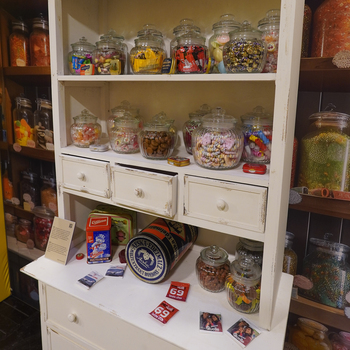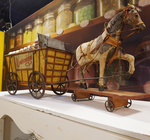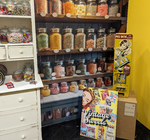
Formerly honey, now gummy bears
 The history of candy dates back thousands of years, from the earliest sweeteners like honey to today's wide variety of sugary treats. The discovery of sugar and cocoa led to a revolution in confectionery production and resulted in a worldwide passion for sweets.
The history of candy dates back thousands of years, from the earliest sweeteners like honey to today's wide variety of sugary treats. The discovery of sugar and cocoa led to a revolution in confectionery production and resulted in a worldwide passion for sweets.Sweets have a fascinating history that goes back thousands of years. The original sweet temptation enjoyed by humanity since prehistoric times was honey. Already the ancient Egyptians began making sweet treats by combining fruits and nuts with honey. More than two thousand years ago, cane sugar started to be used in India. The Arab countries of the early Middle Ages obtained sugar from sugar cane juice and, in combination with fruit juice, developed what was probably the world's first candy mass. According to legend, the word candy goes back to the French King Henri IV. As a great lover of confectionery, he handed out these delicacies at his wedding in 1572 to his guests, who enthusiastically exclaimed “Bon! Bon!“ (French: good).
At the time, sugar was an expensive luxury good produced primarily by slaves in the colonies and reserved only for the elite and rich. This upper class enjoyed sweets such as preserves, jellies, dried fruits and dough wafers. Even doctors started to use sugar to cover up the bad taste of medicine. However, sweets were not yet a common occurrence at that time.
The big turnaround in the history of sweets came with the discovery of the sugar and cocoa combination. As early as 500 BC, people in Central America drank chocolate in liquid form. But it was the Spanish conqueror Cortez who brought both the cocoa beans and the chocolate drink to Spain in 1502. But it took almost another century before the drink conquered the rest of Europe.
The processing of sugar beets in the 19th century, led to dramatic price changes and made it possible for the working class to afford sweets. Over time, sugar became no longer just a condiment, but an integral part of our diet. Tea, coffee, and cocoa became popular beverages in the New and Old Worlds, especially with the advent of tea houses, cafes, and cocoa parlours. Eventually, the wealthy even enjoyed chocolate ice cream in the late 17th century, and in 1847 Joseph Fray created the first chocolate bar.
Another milestone in the history of confectionery occurred with the invention of gummy bears. Their first production began in 1920 in a modest kitchen, with just one sack of sugar, a marble slab and a copper kettle. Their softness was achieved by adding gelatin and their shape was inspired by the trained bears that could be seen at the fairs of that time.
Sugar consumption in Britain increased 22-fold in just 200 years, from 4 pounds per person per year in 1704 to a staggering 90 pounds in 1901. Children were identified as a desirable target group for candy when sugar prices fell and Halloween in the US, the center of manufactured food, became a frenzied celebration of sugar consumption. Nowadays, sugar is often criticized in relation to nutrition and health. New approaches such as sugar-free and vegan products are gaining in importance. But at the end of the day, it's all about moderation, and who wants to resist sweet temptations? Today we are enlightened enough to continue to enjoy modern sweets, just as humanity has always done with honey-infused delights.








